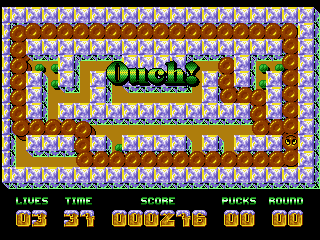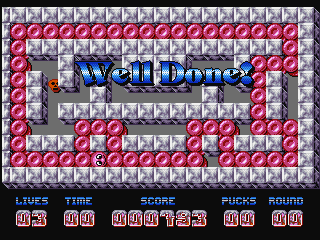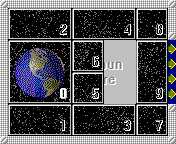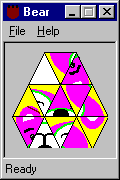This is a curious type of game that’s mostly popular in Germany, or maybe I should say the German-speaking world, for a few examples are Austrian. From their gameplay, these games are puzzle games, relying on logic and contemplation. But additionally, there are arcade concepts like lives and time limits on the levels.
Strictly speaking, these type of game is not a German invention, but a Japanese one. The two earliest instances that I know are two arcade machines, Puzznic and Shisen-Sho Joshiryo-Hen, both from 1989. But these are coin-ops, they have to have these arcade elements or they wouldn’t make their proprietors any money. Japanese puzzle games for home computers (Sokoban, SameGame) are free of them. Germans seem to love this concept as an end in itself.

The two abovementioned arcade machines found followers, and clone makers, mainly and for a while even exclusively in Germany. Puzznic got only few clones and look-alikes, the most remarkable one probably Michael Riedel’s Brix. But there are lots of Shisen-sho games—nearly all of them from Germany, and, as an added curiosity, mainly on Atari platforms.
But new games of this type were created as well. The most remarkable is, I think, Nibbly. It gave a new twist to the Snake/Nibbler concept. In Nibbler, the snake moves through a maze and is therefore in more danger to block its own way. In Nibbly, the maze is completely filled with fruits, the snake will thus grow much faster. You will have to spend a lot of thought on how the maze can be solved. But, even though it was never an arcade machine, time limits and lives are still in place.

Nibbly is an Austrian invention, created by the demo group Cosmos Designs. It started out as a Commodore 64 game, Nibbly ’92. The next year the group ported it, with many enhancements, to Amiga and PC as Super Nibbly. A few years later, it found a shareware clone in Nibbly’96, which is how I came to know and love-hate it.
For as good as any of these games might be, I never understood the idea behind the concept. If you don’t have to keep the player inserting quarters into your machine, why limit his time? Why force him to repeat already solved levels because his lives ran out?












